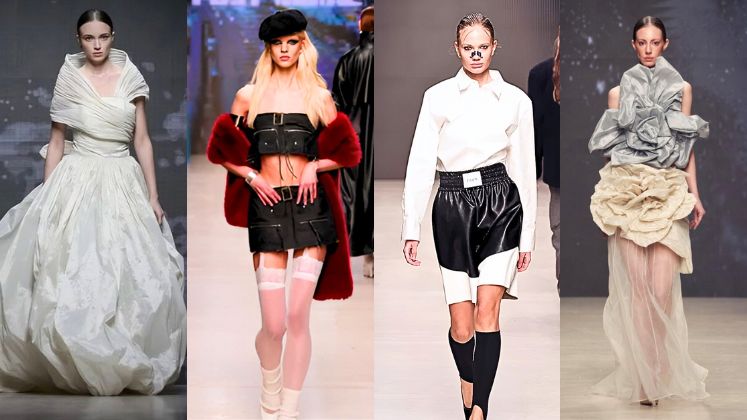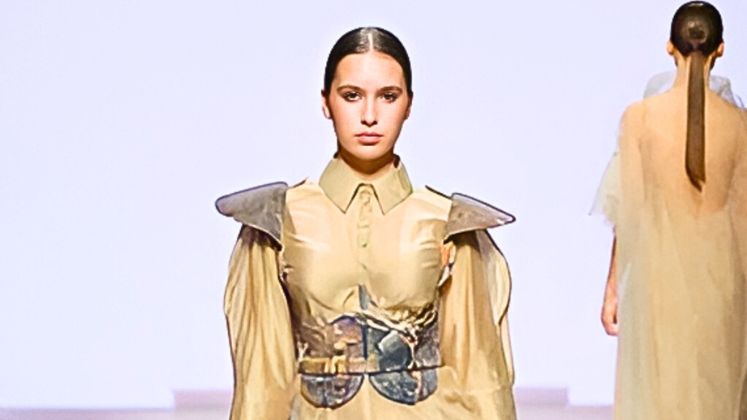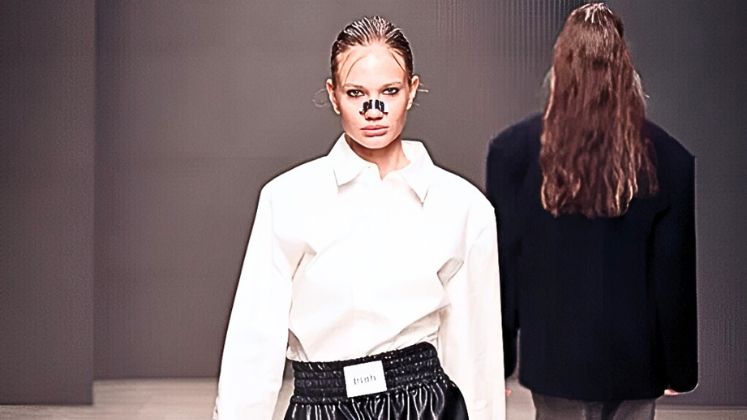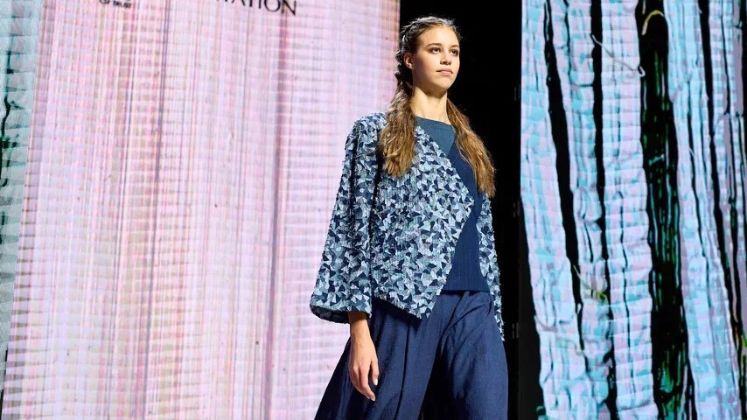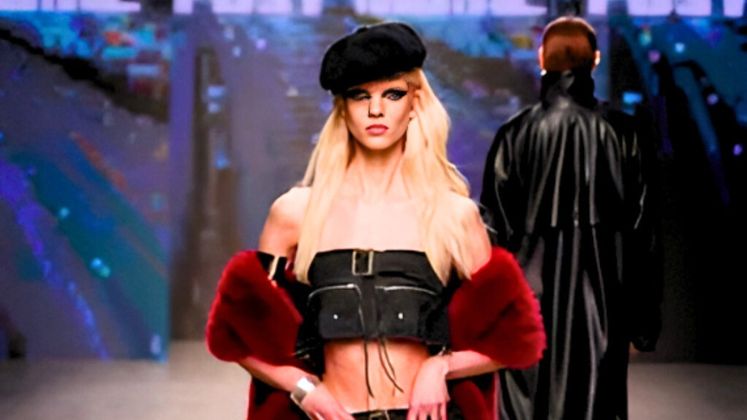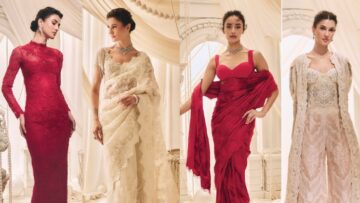The recently concluded Moscow Fashion Week (MFW) reaffirms its global standing as a fashion hub, bringing together over 200 designers from Russia and beyond. Amongst the international participants this season, India’s presence emerged as both prominent and purposeful, led by two distinguished showcases presented by the Fashion Design Council of India (FDCI): Centre of Excellence for Khadi – Khadi India and acclaimed designer Samant Chauhan. CoEK – Khadi India brought about a rich cultural narrative to the runway that was rooted in self-reliance and sustainability. Highlighting India’s heritage textiles, the collection reinterprets Khadi through a contemporary lens, blending artisanal craftsmanship with a sophisticated global aesthetic.
Indian designer Samant Chauhan, renowned for his intricate embroidery on Bhagalpur silk, showcased a collection that resonates with grace and quiet luxury. A seasoned name in global fashion circuits, Samant Chauhan sees MFW as a strategic opportunity to tap into the growing synergy between Indian craftsmanship and Russian sensibilities to appeal to a growing market of interest globally. This exchange is not one-sided. Strengthening Indo-Russian fashion ties, Russian label MEASURE, known for its modest fashion, earlier showcased at Lakmé Fashion Week x FDCI in India and returned to its home turf with momentum. Meanwhile, SOLANGEL, one of Russia’s most glamorous houses worn by global icons including Lady Gaga and Jennifer Lopez, presented crystal-studded eveningwear on the runway. With over 100 shows, emerging talent showcases and fashion-forward market spaces, MFW continues to serve as a launchpad for cross-cultural creativity. As India deepens its engagement with this global platform, the spotlight on Khadi and couture embroidery reflects a broader storyline— one where fashion heritage meets forward-thinking design and where global appreciation for handcrafted excellence keeps growing stronger.
We highlight a breakdown of the top directional themes and how industry stakeholders can translate them into commercially successful collections.
Multifaceted Silhouettes
For Fall/Winter 2025, silhouette innovation is driven by adaptability. The ‘Multifaceted Silhouettes’ trend champions a hybrid approach to silhouettes, as showcased by designers Afujan Baisova and Natalia Smagina.
Structured tailoring is softened by fluid draping, allowing garments to transition across varied lifestyle settings as well as seasons. These silhouettes cater to a market demanding flexibility— think office-to-evening and day-to-night dressing, gender-fluid options and seasonless layering.
Key investment pieces include modular coats with adjustable hems, wrap tops and restructured suiting that blend functionality with refinement. For designers and brands to ace this trend, look at lightweight wools blended with stretch fabrics that offer the needed comfort and drape. Brands should emphasise inclusivity by experimenting with cuts that flatter varied body shapes. Designers should also consider convertible garments and customisable details that echo personal utility in order to stand out in the market.
Sports Chic: Performance Meets Prestige
The ‘Sports Chic’ trend signals a perfect amalgamation of function and finesse. Tracksuits with tailored cuts, sneakers styled with suits and performance fabrics elevated through couture-level finishes define this directional movement.
This season, athleisure evolves into a refined category, appealing to consumers who value comfort without compromising on aesthetics. Think neoprene trenches, cropped tech jackets with clean lines and trousers with elasticised waists meticulously hidden beneath pleats.
Brands should look at investing in high-quality technical fabrics such as four-way stretch, moisture-wicking knits and coated nylons while also focusing on co-ord sets that transition from the gym to the street, with premium detailing such as mesh linings or bonded seams. This trend also serves as an opportunity for cross-category expansion where outerwear brands can explore technical tailoring, while footwear labels can introduce minimalist sneakers with elevated silhouettes.
Modern View on Cultural Heritage: Local Luxury, Global Appeal
Indian craftsmanship takes centre stage this season through the trend ‘Modern View on Cultural Heritage’, as exemplified by CoEK – Khadi India and Samant Chauhan. Their unique approach demonstrates how traditional textiles and embroideries can be reimagined for a luxury-forward, globally resonant market.
Flowing silhouettes such as maxi dresses and floor-length gowns are presented in rich, earthy tones such as chocolates, ochres, deep greens and regal purples, with striking contrast linings and embellishments.
The standout detail? Movement— fabrics that dance with the body, invoking heritage without heaviness.
For brands and designers, this trend offers a roadmap to elevate traditional fabrics such as khadi, chanderi and silk through contemporary cuts and minimalist palettes. Industry stakeholders should look to invest in high-quality artisanal yardage and scalable hand-embroidery techniques.
Historical Femininity: Revisiting Elegance with Purpose
‘Historical Femininity’, as seen in Yelets Lace’s offerings, revives the romanticism of bygone eras through intricate craftsmanship and soft, heritage-driven detailing. This trend taps into consumers’ craving for beauty, nostalgia and narrative-led pieces.
The trend is dominated by elements such as delicate laces, ruffled collars, bishop sleeves and Victorian-inspired silhouettes reinterpreted in contemporary proportions. Fabrics such as tulle, organza and fine cotton work perfectly for soft layering, while embroidery and lace trims add artisanal value to designs.
For designers and brands looking to dominate this trend, the key lies in balancing delicacy with wearability, such as pairing a high-neck lace blouse with structured denim or reworking vintage nightgown aesthetics into slip dresses with utility detailing. Manufacturers can look at refining techniques in surface texturing and exploring laser-cut lace effects to reduce cost without compromising detail.
Retro Futurism: Forward-Looking Nostalgia
Post Ironic’s ‘Once Upon a Time in Russia’ collection encapsulates the ‘Retro Futurism’ trend perfectly. A powerful blend of ’90s nostalgia and futuristic innovation, the key to acing this trend lies in juxtaposition where vintage silhouettes are modernised through bold materials and exaggerated proportions.
Think power shoulders, longline leather trenches and futuristic detailing like iridescent finishes, zippers and panelling. For F/W ’25, brands should consider reintroducing archival styles such as puffer jackets, patent track pants, structured wool coats that are time tested, with a tech-forward twist. Utilise fabrics such as gloss-coated synthetics, quilted metallics and thermo-reactive textiles to convey a sense of evolution.
This aesthetic resonates particularly well with Gen Z and Millennial consumers who value irony, sentimentality and statement-making style. To commercialise this trend, brands and designers can look at updating accessories— think oversized belts, angular sunglasses and exaggerated boots.
Harmonious Contrasts: Where Yin Meets Yang
Harmonious Contrasts speaks of the need for equilibrium in a chaotic world, presenting a visually compelling yet serene design direction for the upcoming season.
For Fall/Winter 2025, voluminous silhouettes such as tiered skirts and capes are paired with sleek innerwear or cinched tailoring to create dimension. Rich silks, textured wools and artisanal embroidery highlight natural irregularities, celebrating the natural beauty of imperfection.
Brands and designers should look at experimenting with silk blends with natural slub, hand-dyed fabrics and embroidery that accentuates contrast – such as matte-on-shine, tone-on-tone metallics. Modular garments that shift shape through layering offer great promise, while this trend also opens space for philosophical storytelling well-suited to slow fashion brands.
The trend can best be exemplified as interpreted by Svetlana Evstigneeva’s SVET line, showcasing the commercial potential of juxtaposition. This theme explores balance between light and dark, structure and softness, raw and refined, through thoughtful layering and textile interplay.

